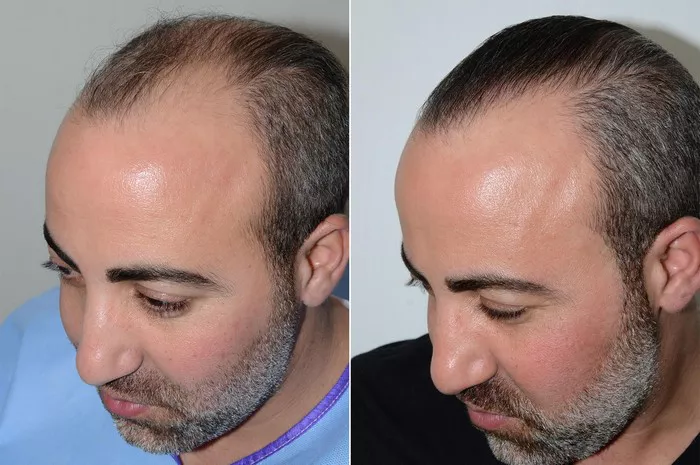Hair transplant surgery is a significant step for individuals seeking to regain a fuller head of hair. While the procedure itself is meticulously performed by skilled surgeons, patients often have concerns about the recovery process. One common question that arises is whether sweating is safe or advisable after a hair transplant. In this article, we delve into this query, providing comprehensive insights into sweating post-surgery and offering guidance on how to navigate this aspect of the recovery period.
Understanding the Hair Transplant Process
Before addressing the issue of sweating post-surgery, it’s crucial to grasp the fundamentals of hair transplant procedures. There are primarily two widely used techniques: follicular unit transplantation (FUT) and follicular unit extraction (FUE). Both methods involve extracting hair follicles from donor areas, typically the back or sides of the scalp, and implanting them into the recipient areas, where hair is thinning or balding.
During the surgery, small incisions or punctures are made in the recipient area to accommodate the transplanted follicles. These incisions are tiny and meticulously placed to ensure natural-looking results. Following the procedure, patients are provided with post-operative care instructions to promote proper healing and optimize the outcome.
The Role of Sweating in Post-Surgery Recovery
Sweating is a natural bodily function that helps regulate temperature and eliminate toxins. However, in the context of hair transplant surgery, patients are often concerned about the potential impact of sweating on the newly transplanted follicles. The primary worry is that sweating might dislodge or damage the grafts, jeopardizing the success of the procedure.
Immediate Post-Surgery Period
In the immediate aftermath of a hair transplant, patients are advised to take certain precautions to protect the newly transplanted hair follicles. While sweating itself is not explicitly prohibited, patients are typically instructed to avoid activities that induce excessive sweating or raise body temperature. This precaution is aimed at minimizing the risk of complications and ensuring the optimal survival of the transplanted grafts.
Patients are also advised to refrain from vigorous exercise, heavy lifting, or strenuous activities for a specified period following the surgery. These activities can elevate heart rate and blood pressure, potentially increasing the likelihood of sweating and compromising the integrity of the grafts. Additionally, patients are instructed to avoid exposure to direct sunlight and to refrain from wearing hats or other headgear that may rub against the recipient area.
Managing Sweating During Recovery
While it’s important to be mindful of sweating during the initial stages of recovery, it’s also essential to strike a balance between caution and normal daily activities. Sweating itself is not inherently harmful to the transplanted follicles, as long as it is kept within reasonable limits and managed appropriately.
One practical way to minimize sweating during the recovery period is to maintain a cool and comfortable environment. Patients can use fans or air conditioning to regulate room temperature and reduce the likelihood of sweating. Wearing loose-fitting clothing made from breathable fabrics can also help minimize sweating and discomfort.
Hygiene and Care
Maintaining good hygiene is crucial during the post-surgery recovery period. Patients are advised to gently cleanse the recipient area as instructed by their surgeon to keep it free from debris, oil, and sweat buildup. However, it’s important to exercise caution and avoid excessive rubbing or scrubbing, which could potentially dislodge grafts or irritate the scalp.
Using mild, non-abrasive shampoos and avoiding harsh chemicals or styling products can also help promote healing and prevent complications. Patients should follow their surgeon’s recommendations regarding post-operative hair care to ensure the best possible outcomes.
Long-Term Considerations
As the recovery progresses and the scalp heals, patients can gradually resume their normal activities, including exercise and physical exertion. However, it’s essential to listen to your body and avoid overexertion, especially during the initial weeks following surgery.
It’s also important to note that individual experiences may vary, and some patients may experience increased sensitivity or discomfort in the recipient area during the recovery period. If sweating or other symptoms persist or worsen, patients should promptly consult their surgeon for further evaluation and guidance.
Conclusion
In conclusion, sweating after a hair transplant is a natural concern for many patients undergoing the procedure. While sweating itself is not inherently harmful to the transplanted follicles, it’s important to exercise caution and follow your surgeon’s post-operative instructions diligently. By taking appropriate precautions and managing sweating effectively during the recovery period, patients can optimize the success of their hair transplant and achieve the desired results. If you have any concerns or questions about sweating or any other aspect of the recovery process, don’t hesitate to reach out to your surgeon for personalized guidance and support.


